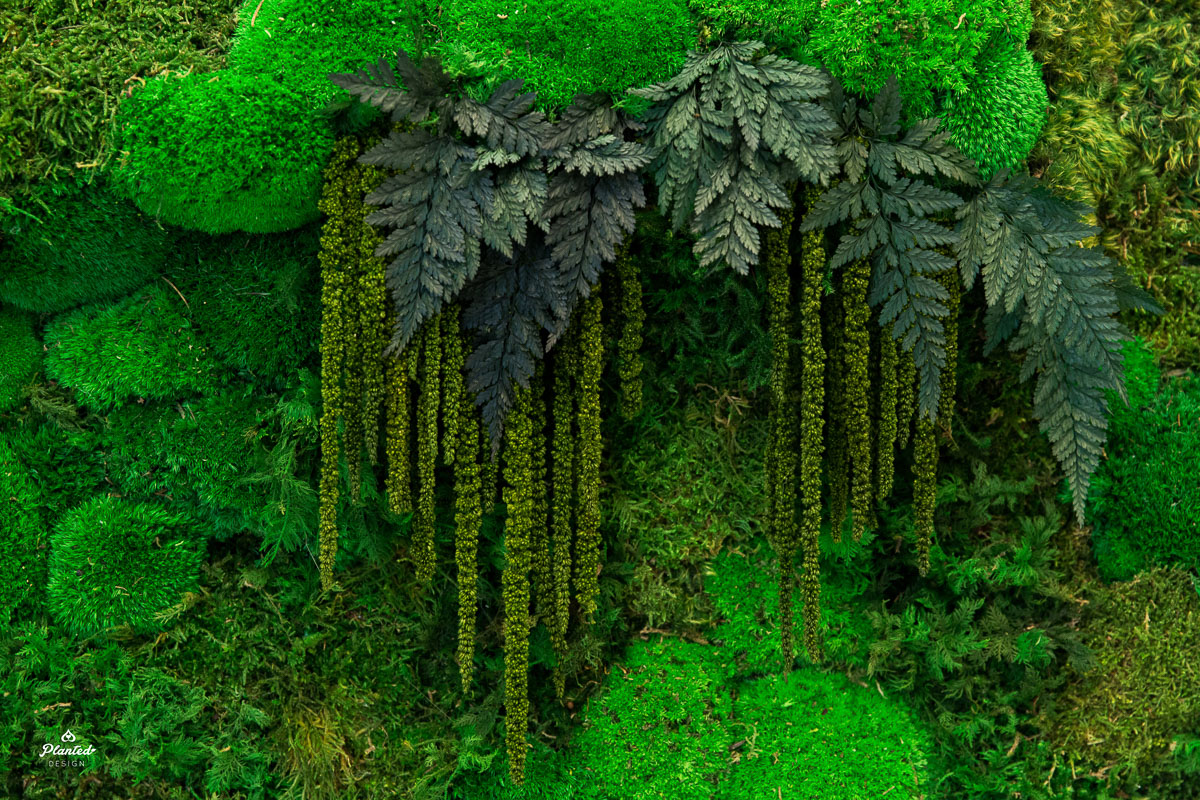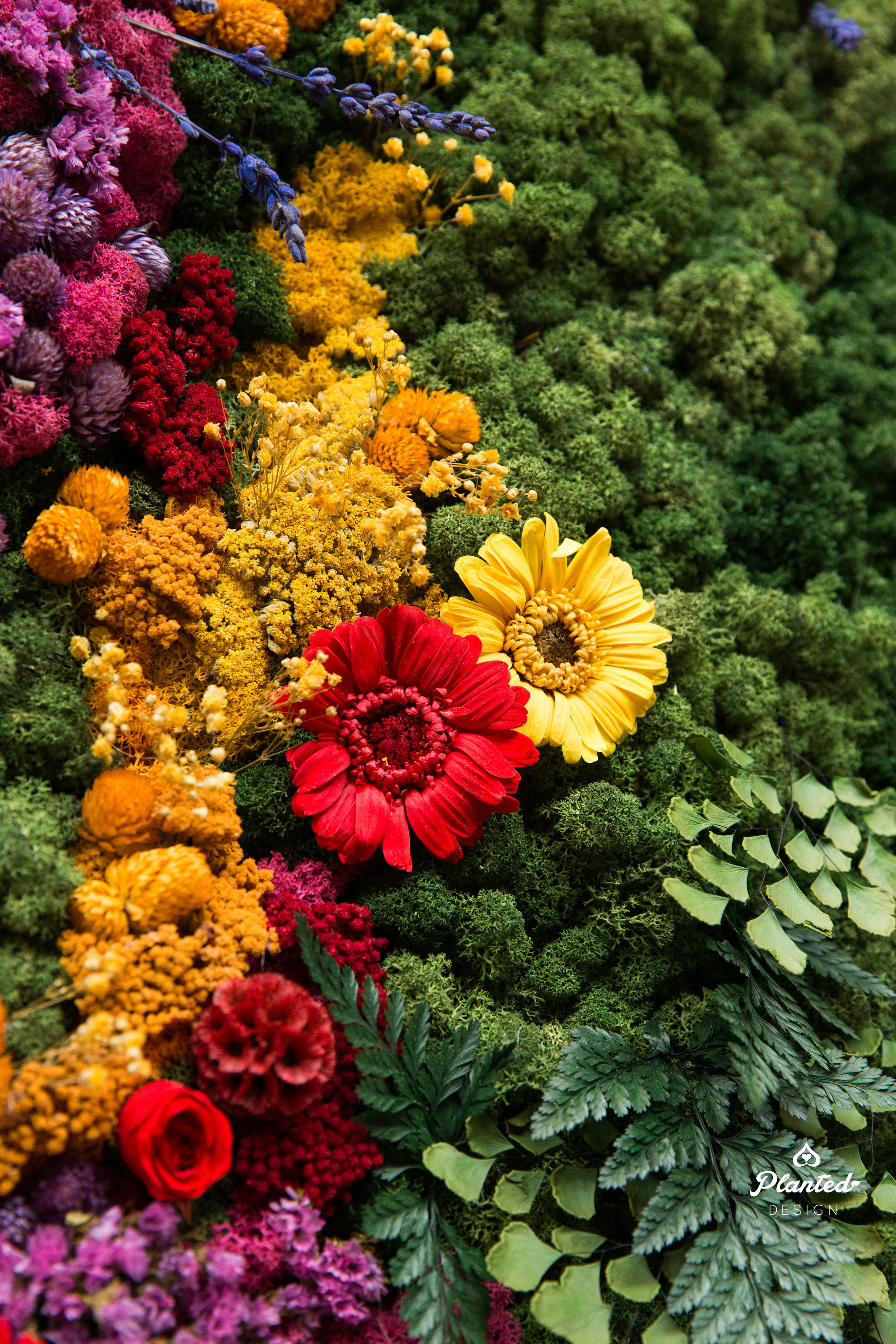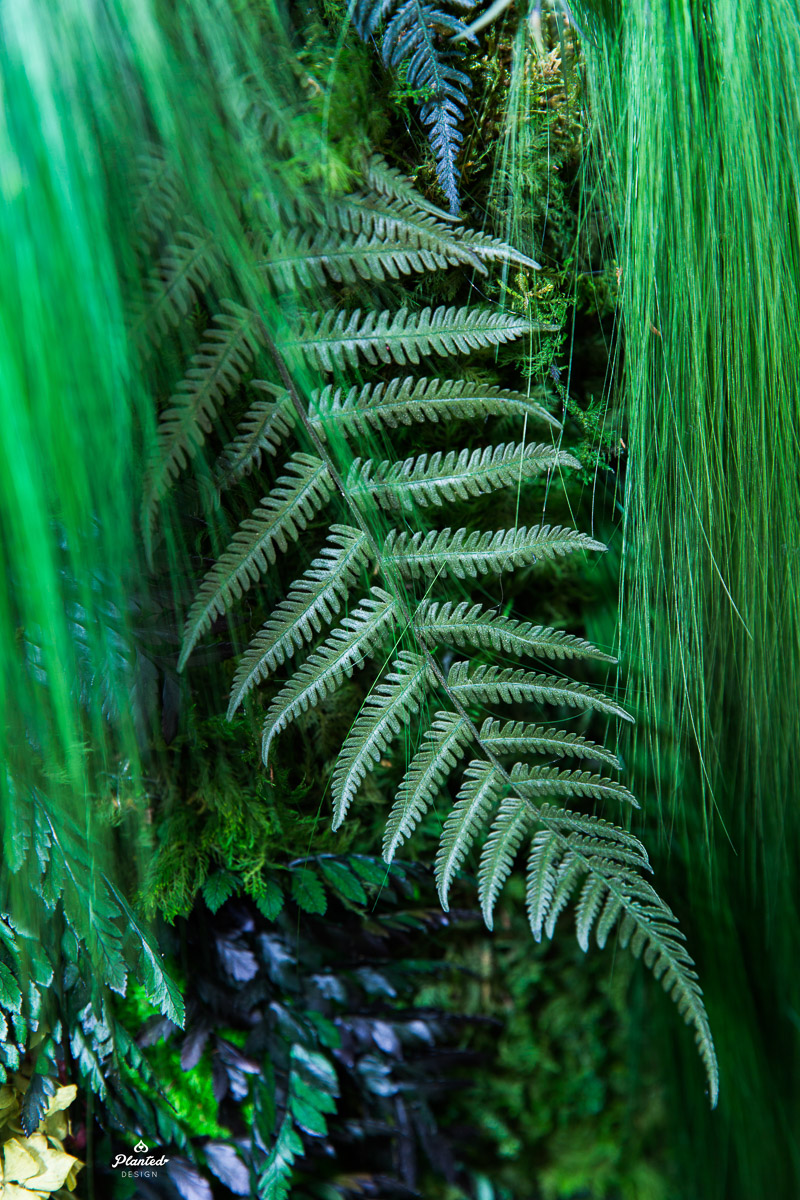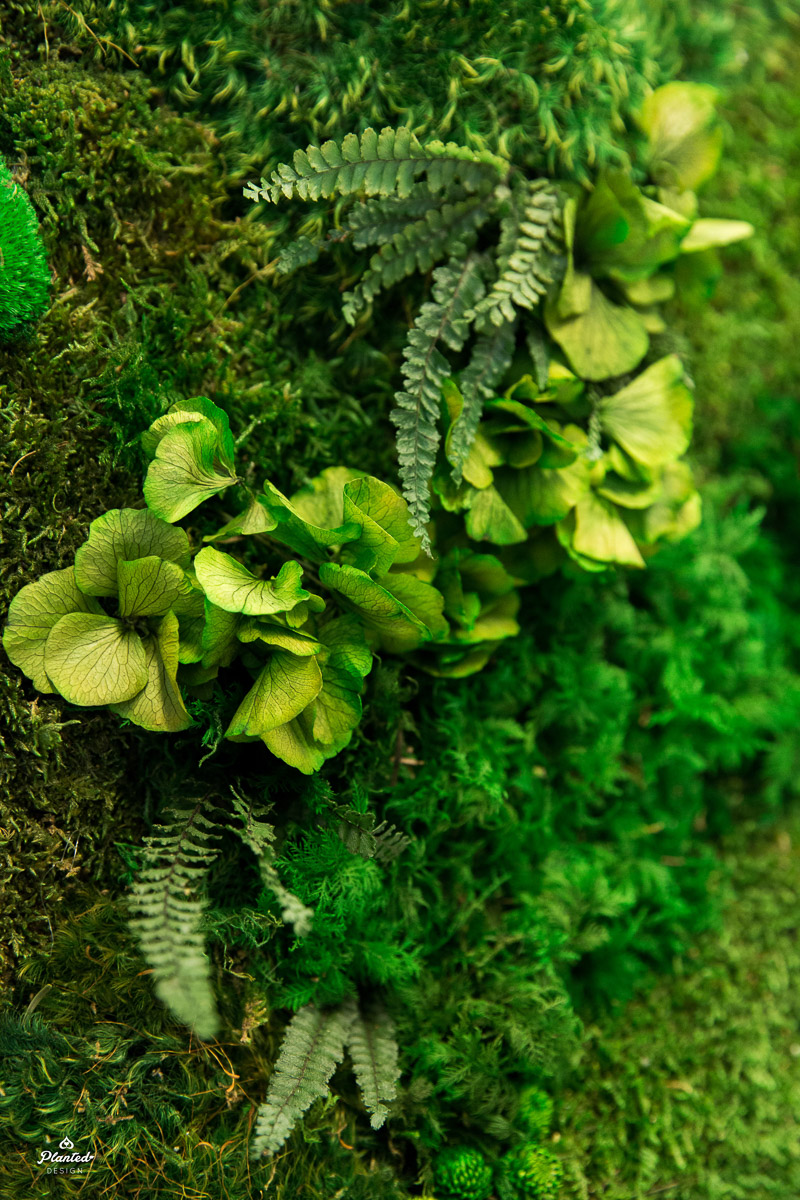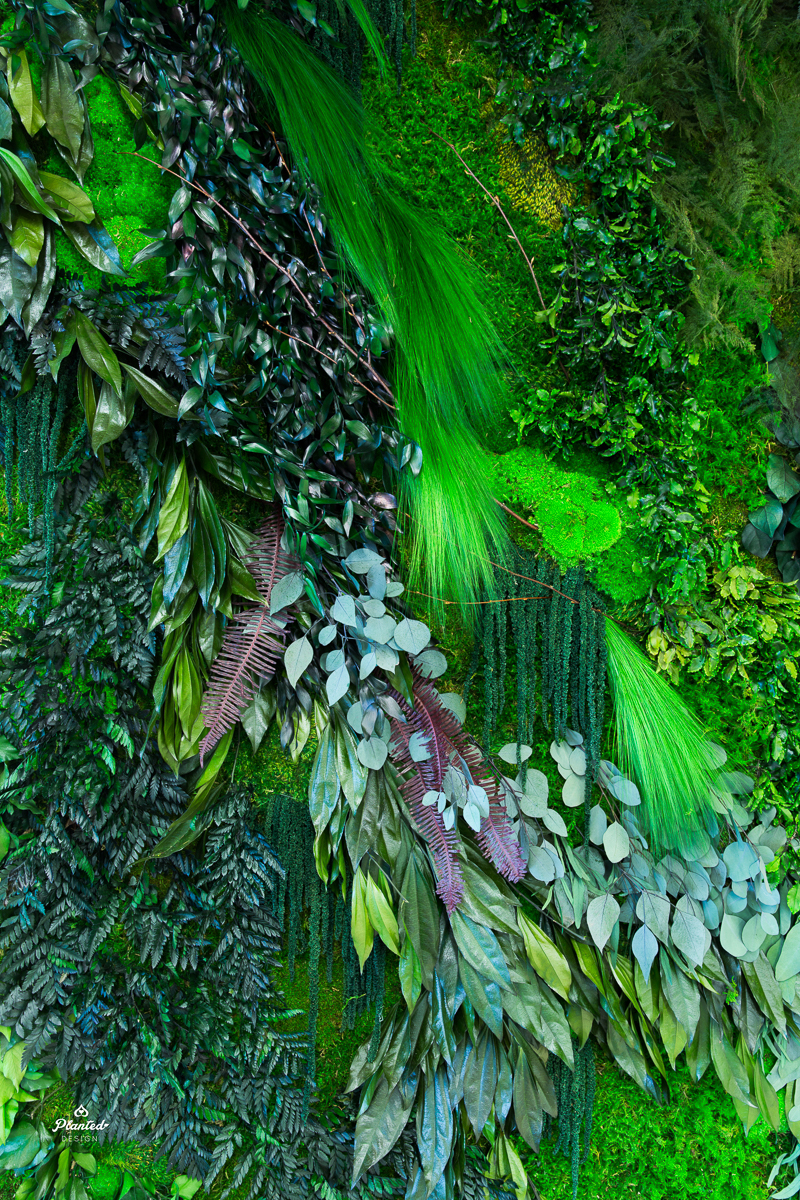The most astonishing thing about moss walls is that even long after a piece is installed, the plants still look as fresh as the day they were picked. It almost seems like magic, and we get questions about it all the time. So let us demystify how real mosses, lichen, flowers and foliage are able to stay looking perky and vibrant for years on end with no water, sun or pruning.
There are two methods used with our plants: Preservation and Stabilization. Both processes are 100% natural, non-toxic and environmentally-friendly. Before either process begins, the plants are picked during the height of their natural state, like when a flower is in full bloom displaying its deepest color.
PRESERVATION (Mosses, Lichen, Flowers)
Preservation begins with slowly drying the plants to remove the water content. Then the plants are soaked in or sprayed with a mixture of vegetable glycerin and food coloring, replacing the natural moisture or sap. Once out of the solution, the plants are cleaned and left to dry.
STABILIZATION (Flowers & Foliage)
Stabilization skips the drying step and allows living plants to take up a mixture of vegetable glycerin, water, nutrients and food coloring via their roots or xylem. The nutrients and water provide the plant with the elements it needs to stay fresh during the stabilization process. Once stabilized, plants are left to dry.
When it comes to the lifespan of a moss wall, factors like exposure to sunlight, humidity and human touch play more of a role than the preservation or stabilization process. Even though preservation essentially leaves the plants “frozen in time,” exposure to these elements can cause some to lighten, darken, perfume, bow or twist over several years. Which just serves as a reminder that these are indeed real plants, and they will still react to their environment.


